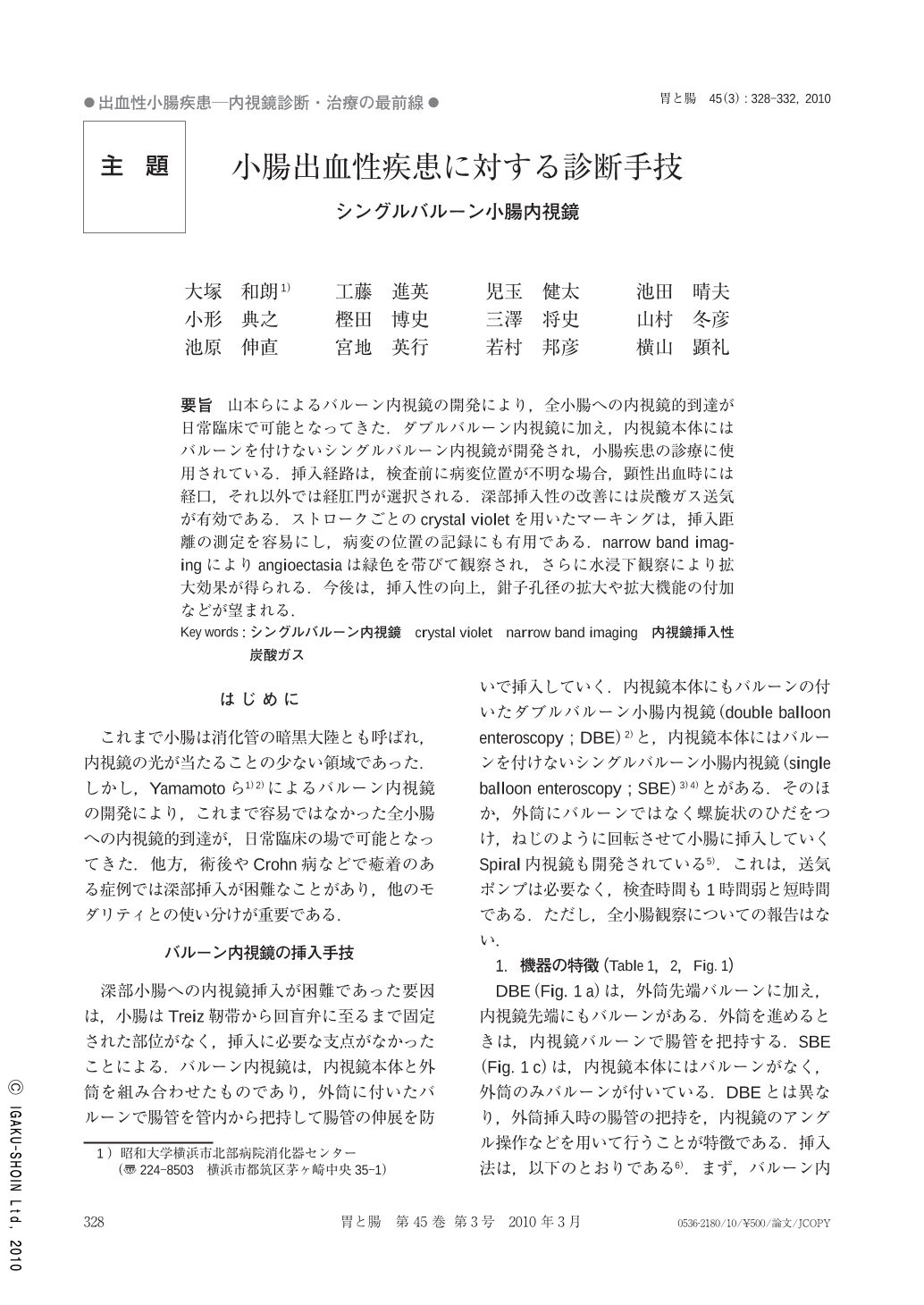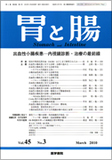Japanese
English
- 有料閲覧
- Abstract 文献概要
- 1ページ目 Look Inside
- 参考文献 Reference
- サイト内被引用 Cited by
要旨 山本らによるバルーン内視鏡の開発により,全小腸への内視鏡的到達が日常臨床で可能となってきた.ダブルバルーン内視鏡に加え,内視鏡本体にはバルーンを付けないシングルバルーン内視鏡が開発され,小腸疾患の診療に使用されている.挿入経路は,検査前に病変位置が不明な場合,顕性出血時には経口,それ以外では経肛門が選択される.深部挿入性の改善には炭酸ガス送気が有効である.ストロークごとのcrystal violetを用いたマーキングは,挿入距離の測定を容易にし,病変の位置の記録にも有用である.narrow band imagingによりangioectasiaは緑色を帯びて観察され,さらに水浸下観察により拡大効果が得られる.今後は,挿入性の向上,鉗子孔径の拡大や拡大機能の付加などが望まれる.
Balloon endoscopy which was invented by Yamamoto enables an endoscopic approach for the entire bowel in daily clinics. Besides the double balloon endoscope, a single balloon endoscope in whch a balloon is attached only to the splinting tube, but not to the scope itself is being used. The choice of the insertion route is important. Antegrade insertion is selected for overt bleeding when the location of the bleeding point is not clear. Retrograde insertion is chosen for other cases. Carbon dioxide insufflation is helpful for insertion. Crystal violet marking is useful for measuring the insertion distance. It is also helpful for recording the location of the lesions. Angioectasia is observed in green by narrow band imaging. The water emersion method has a magnifying effect. Future enteroscopes may be developed with better insertion ability, a larger instrumental cannel, and zooming.

Copyright © 2010, Igaku-Shoin Ltd. All rights reserved.


